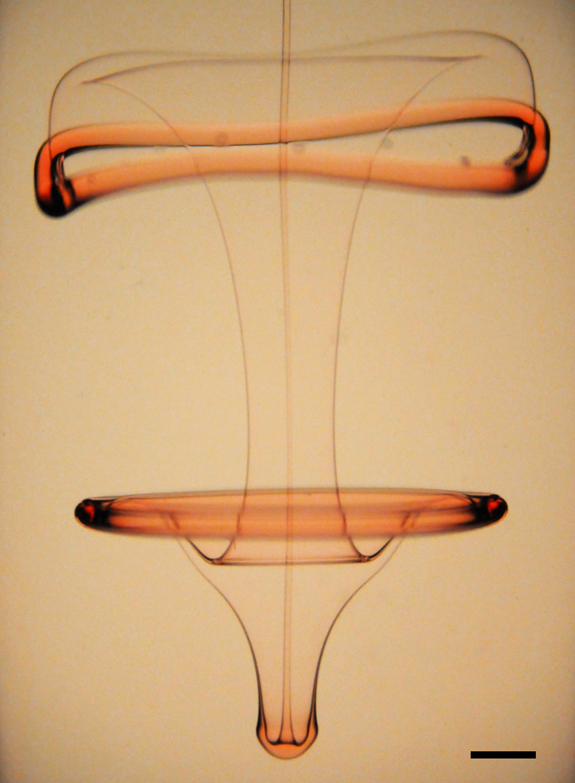Shape Instability of Sedimenting Viscous Drops
Alex Felce
Thomas Cubaud
Stony Brook University
Stony Brook, New York

Silicone oil drop falling into alcohol
This figure displays the shape instability of a viscous drop (silicone oil, viscosity: 50 cSt) falling in a liquid (isopropanol) having a low interfacial tension (scale bar: 1 mm). Dye is mixed with silicone oil to help visualize slender capillary structures. To form the drop, oil is initially deposited at the surface of the solvent. As most of the oil sinks, the droplet remains connected to the surface by a small viscous thread. The subtle balance between viscous and capillary forces leads to the formation of multiple vortex rings joined by complex and regular catenoid-like thin films. This ephemeral flow architecture is observed for a narrow range of oil viscosity.
The research is supported by the National Science Foundation.
Reporters and Editors
Reporters may freely use this images. Credit: Alex Felce and Thomas Cubaud, Stony Brook University (2010).
